The Kumbh Mela
Sacred Celebration
in India
The Largest Religious Gathering on Earth
Article and photos by David Joshua Jennings
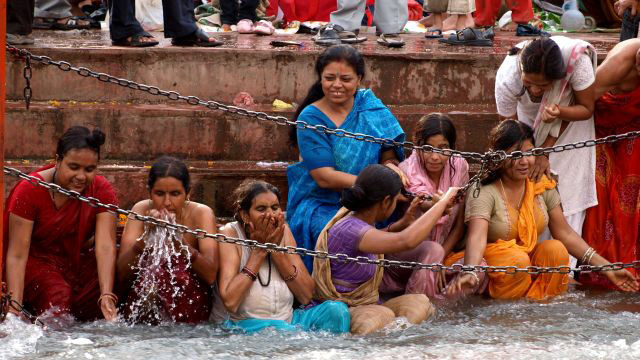
|
|
Hindu women bathing in the river at India's massive Kumbh Mela celebration.
|
Nothing can prepare you for the Kumbh Mela, the planet's most significant religious gathering. It is a time when millions of Hindu pilgrims come together to bathe ceremoniously in India's holiest rivers.
The celebration gets its legitimacy from Hindu mythology, which tells of the ancient sky-borne struggle between gods and demons over a pot, or Kumbh, which contained Amrita Kalasha, the immortal nectar. During the ferocious battle, a few drops sloshed from the Kumbh and fell to four locations: Allahabad, Ujjaink, Nashik, and Haridwar. The Kumbh Mela is held every three years to commemorate this holy event, rotating among these four cities, meaning that each city hosts the sacred festival every 12 years.
Each Kumbh Mela lasts about six weeks, but most people participate during certain auspicious bathing dates (of which there are usually six or seven) when believers bathe ceremoniously in the sacred Ganges, Shipra, or Godavari rivers to achieve "moksha," or liberation from the cycle of birth and death.
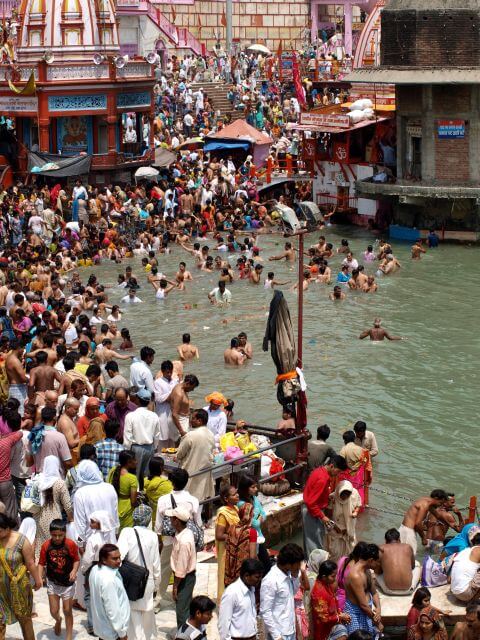
|
|
Hindu crowds bathing at the Kumbh Mela celebration.
|
The sadhus
at the Kumbh Mela
Celebration
Each celebration attracts tens of millions of pilgrims from all over India and provides a perfect opportunity to confront the country's fascinating diversity. Of these pilgrims, the sadhus are the most interesting. Whereas normally, in India, you will encounter many solitary sadhus daily, the Kumbh Mela attracts them by the thousand.
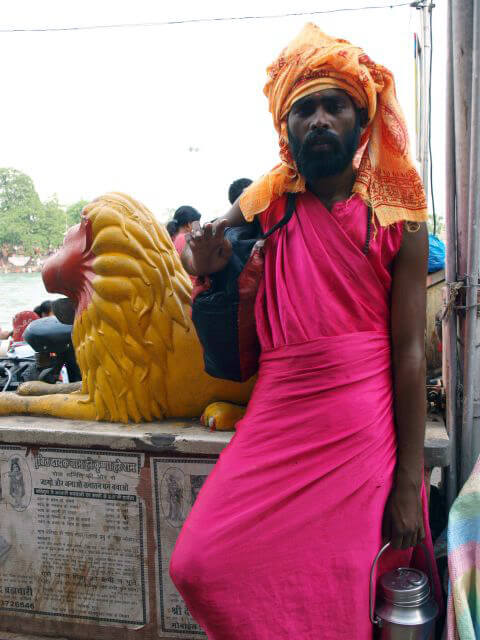
|
|
Hindu holy man at the Kumbh Mela festival.
|
A sadhu is a holy man in a land where holiness sometimes means living in a cave without food, sitting motionless for countless hours without food, or generally going around doing things that require an incredible amount of discipline, such as standing on one foot for a decade or wandering around with an arm in the air for seven years. The sadhu is said to be like a candle in the center of a windless room, whose flame, immune to the stirrings of desire, flickers unwaveringly.
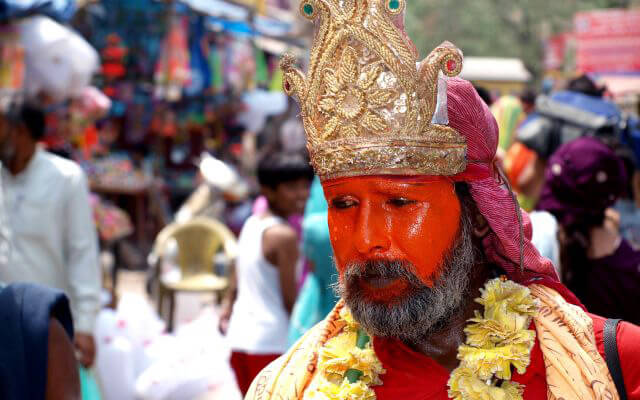
|
|
Hindu Indian holy man sadhu at Kumbh Mela festival.
|
In other words, sadhus have renounced the material world to lead an aesthetic life. They seek to achieve "moksha," liberation from the cycle of birth and death, by meditating constantly and contemplating Brahman, the birthless, deathless, immutable, infinite, immanent, transcendent reality of the universe.
The life of the sadhu is incredibly rugged. Many sadhus rise well before dawn to bathe in the icy mountain streams of their hermitage before settling down to mandatory, daylong prayer and meditation. The absence of common luxuries, such as homes, is a staple of the sadhu lifestyle. Yet, there is no single unified path that all sadhus pursue. In modern India, the lives of sadhus vary greatly. Many sadhus can live communally in ashrams or alone in caves. Others are firmly committed to a life of perpetual wandering.
sadhus are said to embody divinity and are living examples of how human life is supposed to be about religious illumination and transcendence. Most Hindus look to them for religious instruction and the bestowal of blessings. Their austere lifestyle is seen by many as a mechanism that burns away the karma of the wider community. For this public service, they receive alms as rewards.
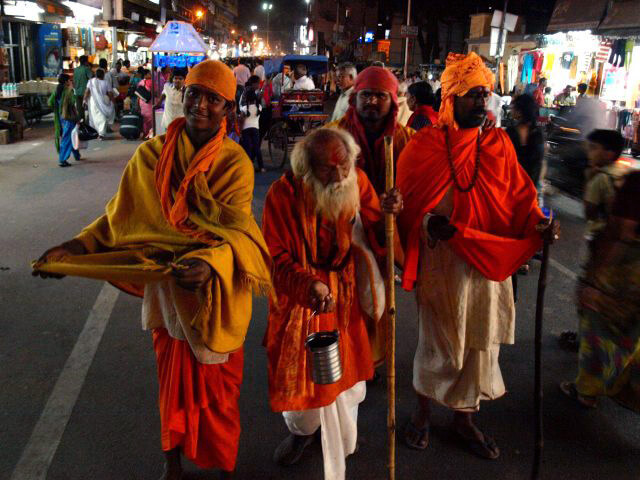
|
|
Hindu Indian holy sadhus are begging for alms at the Kumbh Mela festival.
|
There are four or five million sadhus in India today, and nearly all of them attend pilgrimages during the Kumbh Melas.
David Joshua Jennings is a writer and
photographer from Oklahoma, USA. You can find him at davidjoshuajennings.com.
|
